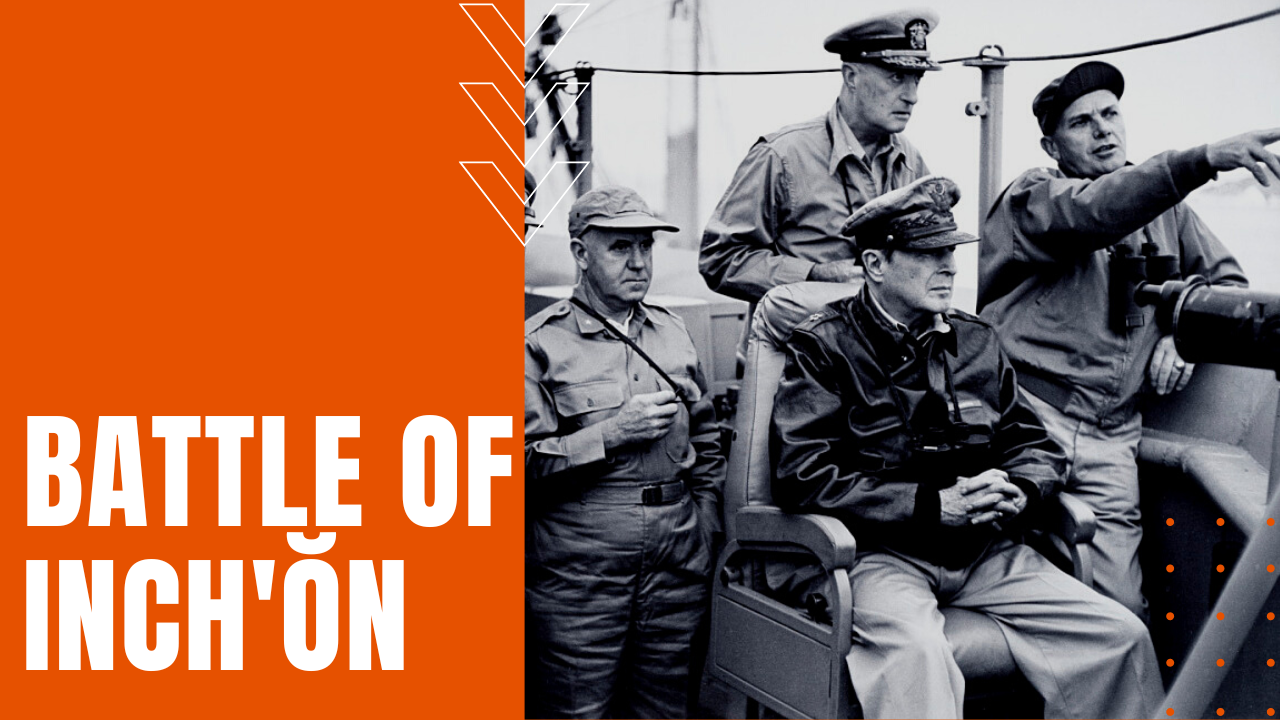Battle of Inchon (Inch’ŏn) of the Korean War

After North Korean forces crossed the 38th parallel and captured the South Korean capital of Seoul, U.S. President Harry S. Truman named General Douglas MacArthur commander-in-chief of all Allied forces.
Before an Allied troop buildup could be landed on the Korean Peninsula, American and South Korean troops were pushed back to Pusan during heavy fighting in August, 1950, leading MacArthur to propose a major amphibious landing behind enemy lines at the busy port of Inch’on, which would allow the Allies to attack enemy forces from two directions at once.
Inchon Landing
Despite heavy objections from other military leaders that such a landing would be hampered by Inch’on’s narrow port channels and extreme tides, Operation Chromite began with an elaborate diversionary attack at Kunsan, some 100 miles south of Inch’on.
On September 10th, 1950, five days before the Allies’ invasion at Inch’on, American warplanes and naval ships bombarded enemy forces and artillery at Wolmido, Green and Red Beaches, while on September 13th, British and American warships fired some 1,000 rounds of 5 and 6-inch shells onto enemy fortifications surrounding Inch’on, but not before enemy shelling damaged three Allied warships.
The Battle of Inchon
Beginning in the early morning of September 15th, elements of X Corps landed at Green Beach, followed by landings at Red Beach late in the afternoon. By nightfall, all enemy defenses at Inch’on had been neutralized, allowing Allied forces to begin their assault on Seoul some 25 miles to the northeast.
On September 17th, Allied forces took control of Kimpo Airfield west of Seoul—the largest and most important airfield in Korea—and after an attempt by North Korean forces to retake the field, an overwhelming Allied force moved into Seoul, pushing enemy forces back across the Han River.
Seoul was declared liberated on the evening of September 25th, while the last elements of North Korean forces would be driven out or destroyed by September 28th. The Battle of Inch’on would prove to be a flawlessly executed success, which according to military historian Spencer C. Tucker, embodied “the only unambiguously successful, large-scale U.S. combat operation” for the next 40 years, making the Battle of Inch’on, one of the most decisive engagements during the Korean War.
